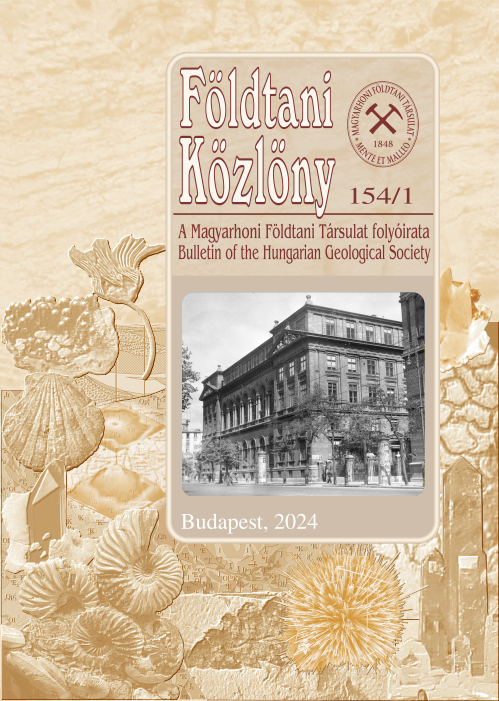The role of tectonic and fluvial forces in the formation of the hilly area between the Kőszeg Mountains and the Rába River
Abstract
The study area is delineated by the Répce, Rába and Lafnitz rivers, and the metamorphic Kőszeg and Bernstein Mts in the north. It is a hilly area dissected by steep scarps. To the east of the lower course of the Pinka river the terrain is gently
undulating, whereas to the west the terrain is more dissected. However, with regard to the formation of the steep scarps, previous studies are contradictory. The aforementioned characteristic morphology and the bimodal distribution
of drainage orientation (N–S and W–E) raise several questions about the landform evolution of this area. In order to answer these questions a field survey was carried out with reference to previous geological data (maps, drilling data) and
GIS-analysis (especially digital terrain analysis).
Among the steep scarps, the Torony scarp was carefully examined by field observation and drilling data that proved its tectonic origin. In the present study the boundary of the tilted units was carefully delineated and a schematic model
was created based on these results. The examination of parallel gravel terraces approved the tilting of the study area between the Lafnitz and Strem rivers, as well as in the area north of the middle section of the Strem river. As a result of
digital terrain analysis, river valleys were identified which are too wide with respect to the magnitude of their actual stream (e.g. Pinka, Strem, Zickenbach). These valley directions and the locations of wind gaps helped to determine
former drainage directions. The latter were active in earlier evolution phases only and later became inactive due to stream capture (e.g. the Pinka–Strem–Zickenbach–Reinersdorferbach system, and “wind gaps” on the Lutzmannsburg, Torony,
Fidisch and Lafnitz scarps). In order to study the tectonic constrains on landform development, the characteristic surface lineaments were spatially compared to basement faults and morphology. At some locations a closely related surface was
found alongside basement lineaments (e.g. Stegersbach Line, Lower Pinka Scarp, Kohfidisch Scarp, Bocksdorf Scarp and Torony Scarp). However, other lineaments proved to be independent (e.g. Oberwart Scarp, Güssing Scarp). Most structural lineaments are in good agreement with the main stress field of the study area.
Finally, using all of the above results, the drainage reorganization phases were outlined, emphasizing the relationship of drainage changes and tectonic morphological processes. The original, generalized south-eastern flow direction transformed into southern direction due to the general tilting of the area, and rivers were diverted by several W–E oriented uplifting scarps (e.g. Bocksdorf, Torony and Lutzmannsburg scarps). The conclusion of the study is that the formation of the steep scarps (which are mainly of tectonic origin but in some cases of fluvial origin) exerted a strong control on landform evolution. These changes are witnessed by correlative landforms, such as wind gaps or antecedent valley segments.











